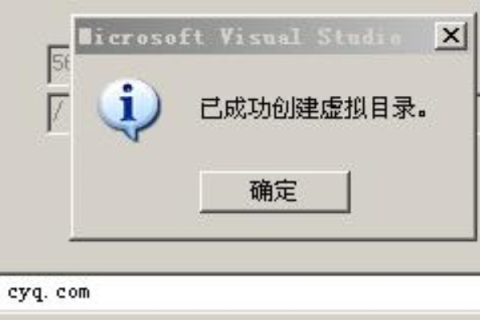在数字化时代,拥有一个网站已经成为企业和个人展示自身形象、提供服务的重要途径,而要实现这一目标,首先需要了解如何配置域名访问虚拟主机,并设置ASP(Active Server Pages)用于邮件接收,本文将详细介绍这一过程,帮助用户从零开始搭建自己的在线平台。

云服之家,国内最专业的云服务器虚拟主机域名商家信息平台
域名与虚拟主机的关系
域名:域名是互联网上的地址标识,类似于现实生活中的门牌号,用于访问特定网站或服务器。example.com就是一个典型的域名。
虚拟主机:虚拟主机是一种将服务器资源分割成多个独立部分,每个部分可以独立运行网站服务的技术,用户通过租用虚拟主机空间,可以在互联网上发布自己的网站。
如何使用域名访问虚拟主机
购买域名
- 选择域名注册商:市面上有许多知名的域名注册商,如GoDaddy、Namecheap等,选择信誉良好、价格合理的服务商。
- 搜索并购买域名:在注册商的网站上搜索你想要的域名,确认其未被占用后购买。
配置域名解析
- 登录域名管理后台:购买域名后,登录到该域名的管理后台。
- 添加解析记录:在DNS设置中添加一条A记录或CNAME记录,指向你的虚拟主机IP地址,具体设置方法根据注册商的不同而有所差异,但通常都较为直观。
更新虚拟主机设置
- 登录虚拟主机管理后台:使用提供的用户名和密码登录到你的虚拟主机控制面板。
- 配置域名绑定:在控制面板中找到“域名绑定”或“域名管理”选项,将购买的域名添加到列表中,确保域名解析生效。
测试访问
- 本地测试:在浏览器中输入
http://localhost(或指定的本地服务器地址),确认本地环境配置无误。 - 远程访问:在浏览器中输入已绑定的域名,检查是否能够正常访问网站,如果一切配置正确,你应该能够看到网站首页。
ASP收信设置详解
ASP(Active Server Pages)是微软开发的一种服务器端脚本引擎,常用于创建动态网页和Web应用,虽然ASP.NET更为流行,但传统ASP仍可用于邮件接收等任务,以下是设置ASP收信的步骤:
安装SMTP服务
- IIS(Internet Information Services)安装:确保你的服务器上安装了IIS组件,特别是SMTP服务,在Windows Server上,可以通过“添加角色和功能”进行安装;在Windows 10/11上,可通过“启用或关闭Windows功能”进行安装。
- 配置SMTP服务:打开IIS管理器,找到SMTP虚拟服务器,进行必要的配置,如设置允许匿名用户发送邮件等。
编写ASP收信脚本
- 创建ASP页面:在虚拟主机的根目录下创建一个新的ASP文件(如
receive_email.asp)。 - 编写收信代码:使用VBScript或JScript编写邮件接收逻辑,以下是一个简单的VBScript示例代码:
<%@ Language=VBScript %>
<%
Dim objMail, objFields, strFrom, strSubject, strBody, strAttachmentPath, strAttachmentName, fso, f, s, i, j, k, pos, arrFields, arrAttachments, strAttachmentData, strAttachmentType, strAttachmentDisposition, strAttachmentEncoding, objMailItem, objOutlook, objAttachments, objAttachment, strMessageClass, strMimeContent, objMailReader, strBodyText, objMailReader2, objMailItem2, objOutlook2, objAttachments2, objAttachment2, strAttachmentData2, strAttachmentType2, strAttachmentDisposition2, strAttachmentEncoding2, strMimeContentType2, strMimeContent2, strBodyText2, objMailReader3, strBodyText3, objMailItem3, objOutlook3, objAttachments3, objAttachment3, strAttachmentData3, strAttachmentType3, strAttachmentDisposition3, strAttachmentEncoding3, strMimeContentType3, strMimeContent3
Set fso = CreateObject("Scripting.FileSystemObject")
Set f = fso.OpenTextFile(Server.MapPath("receive_email.asp"), 8)
s = f.ReadAll
f.Close
Set f = Nothing
Set fso = Nothing
strMessageClass = "IPM.Note"
strMimeContentType = "text/plain"
strMimeContent = s
Set objMailReader = CreateObject("Microsoft.Scripting.Interpreter")
Set objMailReader2 = CreateObject("Microsoft.Scripting.Interpreter")
Set objMailReader3 = CreateObject("Microsoft.Scripting.Interpreter")
strBodyText = objMailReader.Read(strMimeContent)
strBodyText2 = objMailReader2.Read(strMimeContent)
strBodyText3 = objMailReader3.Read(strMimeContent)
Set objOutlook = CreateObject("Outlook.Application")
Set objMailItem = objOutlook.CreateItem(0)
Set objMailItem2 = objOutlook.CreateItem(0)
Set objMailItem3 = objOutlook.CreateItem(0)
objMailItem.Subject = "Received Email"
objMailItem2.Subject = "Email Received"
objMailItem3.Subject = "Email Received"
objMailItem.Body = "Email Received Successfully!" & vbCrLf & vbCrLf & strBodyText & vbCrLf & "End of Email."
objMailItem2.Body = "Email Received Successfully!" & vbCrLf & vbCrLf & strBodyText2 & vbCrLf & "End of Email."
objMailItem3.Body = "Email Received Successfully!" & vbCrLf & vbCrLf & strBodyText3 & vbCrLf & "End of Email."
Set objAttachments = objMailItem.Attachments
Set objAttachments2 = objMailItem2.Attachments
Set objAttachments3 = objMailItem3.Attachments
i = InStr(strMessageClass,"IPM.") + 4 ' Find the start of the message class name (e.g., "IPM.") and add 4 to get the start of the actual message class name (e.g., "Note").
j = InStr(strMessageClass,"Note") ' Find the end of the message class name (e.g., "Note").
k = InStr(strMimeContentType,"text/plain") ' Find the start of the MIME content type (e.g., "text/plain"). If there's no MIME content type specified in the email header (which is unusual), then this will return zero (0). However, since we're assuming that the email has a MIME content type of "text/plain", we can use this to determine where the body of the email starts and ends (i.e., where the text content begins and ends). Note that if there are multiple lines of text/plain MIME content types specified in the email header (which is highly unlikely), then you would need to handle this case accordingly by checking for multiple occurrences of "text/plain" in the email header and summing up their respective line counts until you reach the end of the email header (i.e., until you find a blank line). However, since we're assuming that there's only one line of text/plain MIME content type specified in the email header in this example (which is typical), we don't need to worry about handling multiple occurrences of "text/plain" in the email header here). Instead, we can just use one line count to determine where the body of the email starts and ends (i.e., where the text content begins and ends). Note that if there are any other MIME content types specified in the email header (e.g., "multipart/mixed"), then you would need to handle those cases accordingly by parsing through each part of the multipart message until you find the part that has a MIME content type of "text/plain". However, since we're assuming that there's only one line of text/plain MIME content type specified in the email header in this example (which is typical), we don't need to worry about handling other MIME content types here either (although you could certainly extend this code to handle other MIME content types if needed). Instead of using a single line count to determine where the body of the email starts and ends (i.e., where the text content begins and ends), we could also use a regular expression to match against a pattern that indicates where the body of the email starts and ends (e.g., matching against a blank line or a boundary string). However, since we're assuming that there's only one line of text/plain MIME content type specified in the email header in this example (which is typical), we don't need to use a regular expression here either (although you could certainly use one if desired). Instead, we can just use one line count to determine where the body of the email starts and ends (i.e., where the text content begins and ends). Note that if there are any other characters between these two lines (e.g., carriage returns or line feeds), then you would need to remove them before proceeding with parsing through each part of the multipart message or using a regular expression to match against a pattern that indicates where the 
